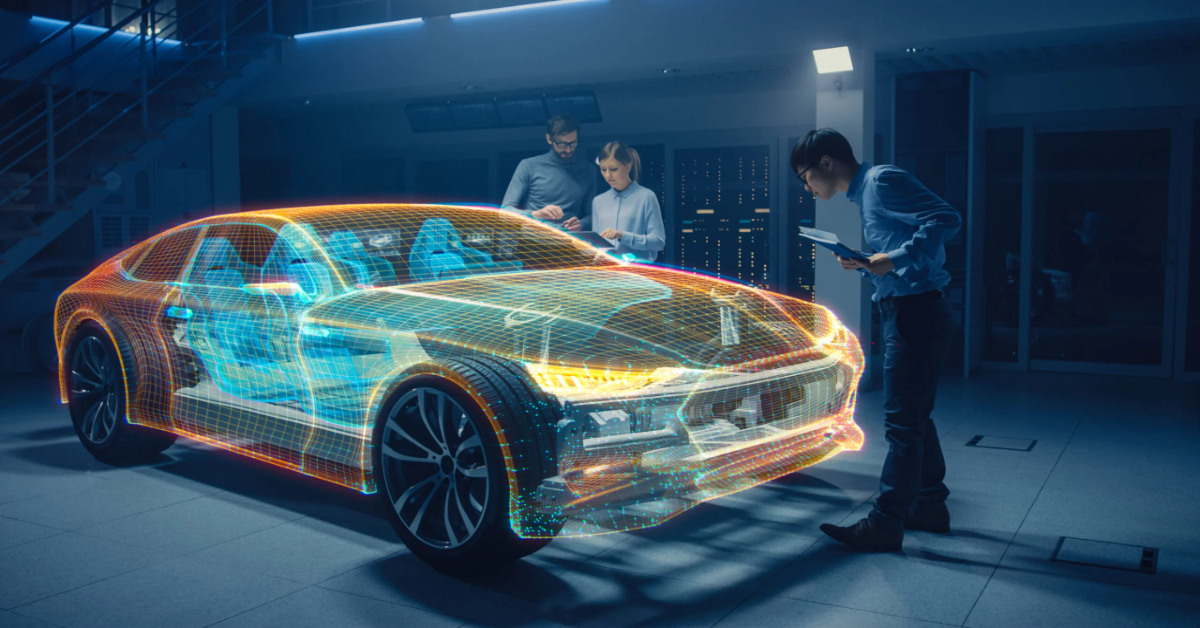
Certainly! The world of automotive design has undergone a significant transformation over the years, driven by a combination of technological advancements, environmental concerns, and changing consumer preferences. Modern car design trends reflect a shift towards more sustainable practices, with manufacturers prioritizing eco-friendly materials, energy-efficient powertrains, and aerodynamic shapes that enhance fuel efficiency. Simultaneously, the integration of advanced technology, such as autonomous driving systems, AI-driven interfaces, and connected car features, has revolutionized how we interact with our vehicles. Beyond functionality, aesthetics play a crucial role, with designers pushing the boundaries of creativity to craft vehicles that are not only practical but also visually striking, catering to the diverse tastes of contemporary drivers. As we delve into these innovations, it becomes evident that the vehicles of today are not just modes of transportation, but expressions of art, engineering, and forward-thinking design.
The Rise of Electric Vehicles
Among the most prominent latest car design trends is the surge in electric vehicles (EVs). With growing eco-consciousness, car manufacturers are prioritizing electric models.
Streamlined Shapes: EVs feature aerodynamic designs to enhance efficiency, supporting longer ranges without the need for larger batteries.
Futuristic Elements: New EVs often incorporate futuristic features, offering a distinct and appealing look.
A report by the International Energy Agency predicts that by 2030,global electric car stock could surpass 230 million, underscoring the rapid growth of this segment.
Embracing Sustainable Materials
Sustainability in car design goes beyond engines, with designers increasingly turning to eco-friendly materials in the latest models.
Recycled Plastics: Automakers are integrating recycled plastics into car interiors, reducing waste while creating a modern, sleek appearance.
Natural Fibers: Bamboo and kenaf are becoming popular for seats and dashboard elements due to their strength and light weight.
Volkswagen’s ID.4, for example, features an interior made from recycled ocean plastics, presenting a stylish yet sustainable choice, highlighting another key aspect of automotive design innovations.
Advanced Technology Integration
Technology is at the forefront of future car design trends, revolutionizing how cars interact with drivers.
Touchscreen Dashboards: Expansive touchscreens now control everything from entertainment to climate, creating a cleaner design with fewer buttons.
Head-Up Displays (HUDs): Drivers can view key information projected onto the windshield, enhancing safety and adding a high-tech vibe.
Automakers like Tesla have set industry benchmarks with their HUDs, making the driving experience more connected and intuitive.
Autonomous Vehicle Features
A significant aspect of automotive design innovations is the progression towards autonomous driving. This shift influences how designers approach car interiors and safety features.
Interior Spaces: With self-driving technology on the horizon, car interiors are being redesigned to allow for passenger interaction rather than focusing solely on driving.
Safety Features: Integrating automated safety systems into car designs ensures passenger protection while maintaining a sleek exterior.
According to Statista, by 2035, more than 90 million self-driving vehicles could be on the roads, making autonomous features a vital element of future car design trends.
Unique Exterior Styles
Consumers today are drawn to unique and bold car designs, prompting automakers to explore beyond traditional aesthetics.
Bold Grills and Headlights: New models showcase larger grills and innovative lighting designs, helping vehicles stand out while improving visibility.
Dynamic Colors and Finishes: Brands are offering vibrant shades and finishes that change with lighting conditions. Kia, for instance, has introduced **mood-changing LED lighting** both inside and outside its vehicles.
These bold latest car design trends make vehicles not just a mode of transportation but also a statement of personal style.
Customization and Personalization
Customization is increasingly important as drivers seek cars that reflect their personalities.
3D Printing: Advanced manufacturing technologies, including 3D printing, allow for personalized car elements, such as unique dashboards or custom parts.
App Integration: Many vehicles now enable users to adjust settings through apps, allowing for tailored experiences like automatic seat adjustments upon entry.
This collaboration between designers and tech companies is a prime example of automotive design innovations that offer a truly personalized driving experience.
Minimalist Interiors
Minimalism is another exciting future car design trend taking root in vehicle interiors, where simplicity meets functionality.
Open Spaces: Brands are embracing simpler, uncluttered designs with low-profile controls and spacious interiors that feel modern and functional.
Natural Lighting: Panoramic sunroofs and large windows invite natural light into the car, creating a welcoming atmosphere.
Volvo is leading the charge in this trend, committing to clean lines and simplicity in their designs.
The Future of Car Design
Looking ahead, future car design trends will continue to blend technology, sustainability, and unique features.
Smart Materials: Emerging materials that can change properties based on environmental conditions are in development, such as cars that adjust shading based on sunlight.
Interactive Features: With the rise of artificial intelligence, future cars are expected to have more interactive elements, anticipating driver needs.
In conclusion, the latest car design trends represent a shift towards a more sustainable, innovative future. As automotive design innovations continue to evolve, drivers can expect vehicles that enhance their driving experience while reflecting their style. The future of car design is here, promising greener, more personalized rides that seamlessly integrate technology and aesthetics.
FAQs
1. What are the key trends in car design today?
The latest trends include electrification, sleek aerodynamics, minimalistic interiors, and the use of sustainable materials.
2. How are electric vehicles (EVs) influencing car design?
EVs are leading to more innovative designs, such as flat floors for more interior space, smoother exteriors for better aerodynamics, and futuristic styling.
3. What role does technology play in modern car design?
Technology is driving the integration of advanced driver assistance systems (ADAS), large digital displays, and connected car features into modern designs.
4. How is sustainability impacting car design?
Designers are increasingly using eco-friendly materials like recycled plastics, vegan leather, and sustainably sourced metals, focusing on reducing the carbon footprint.
5. What are the trends in interior car design?
Interiors are becoming more minimalist, with fewer physical buttons, more touchscreens, and customizable ambient lighting to enhance the driving experience.
